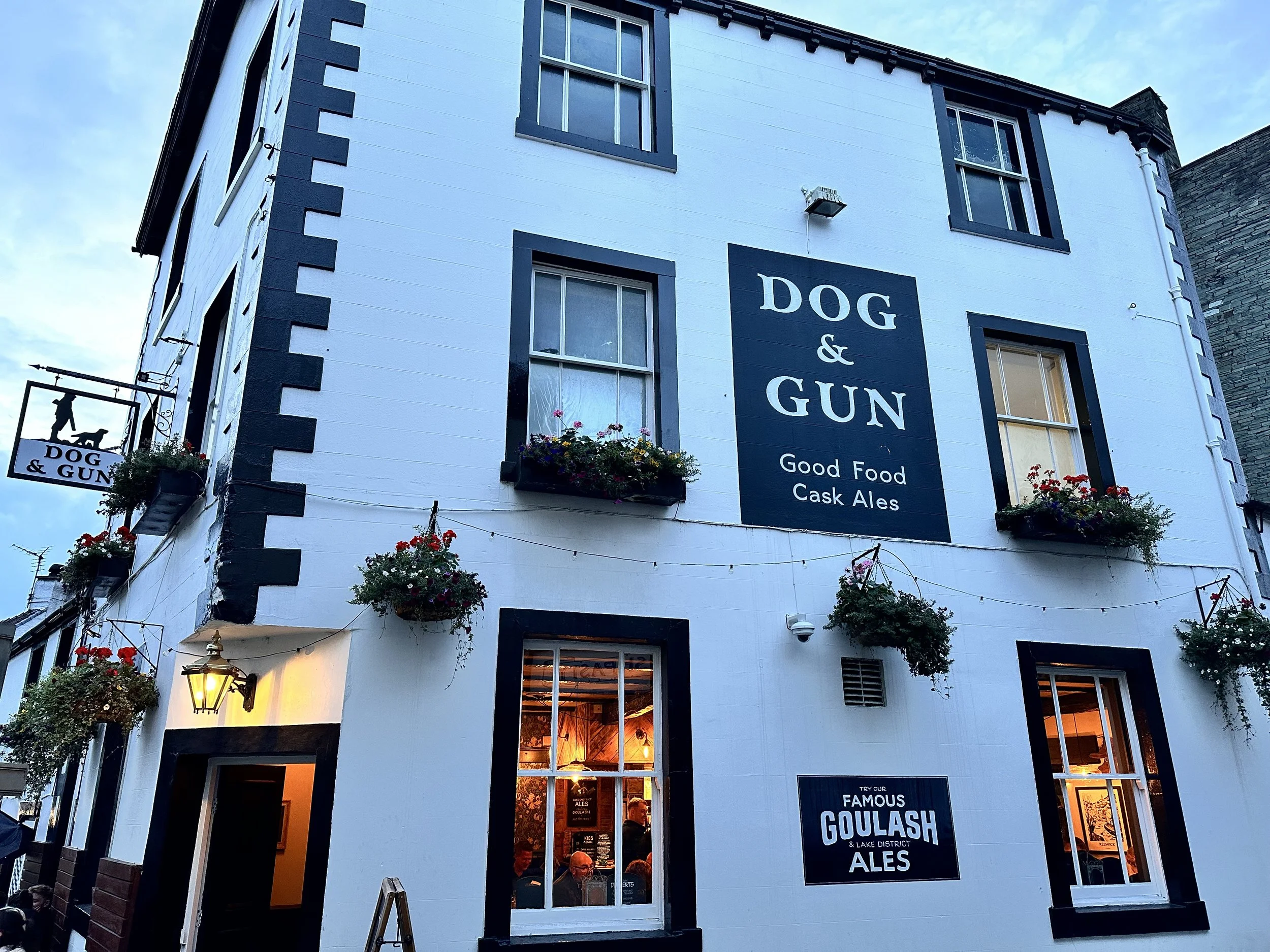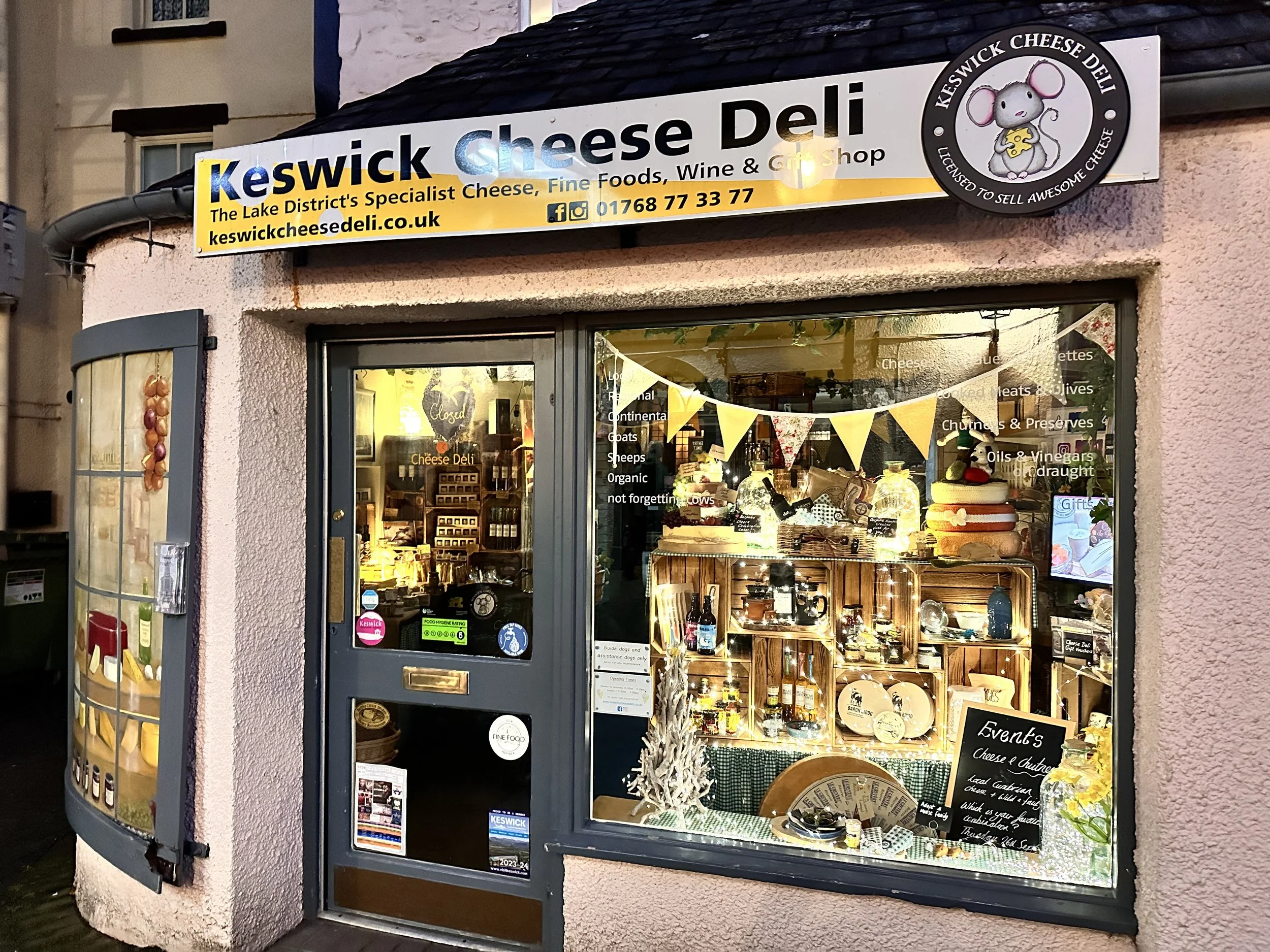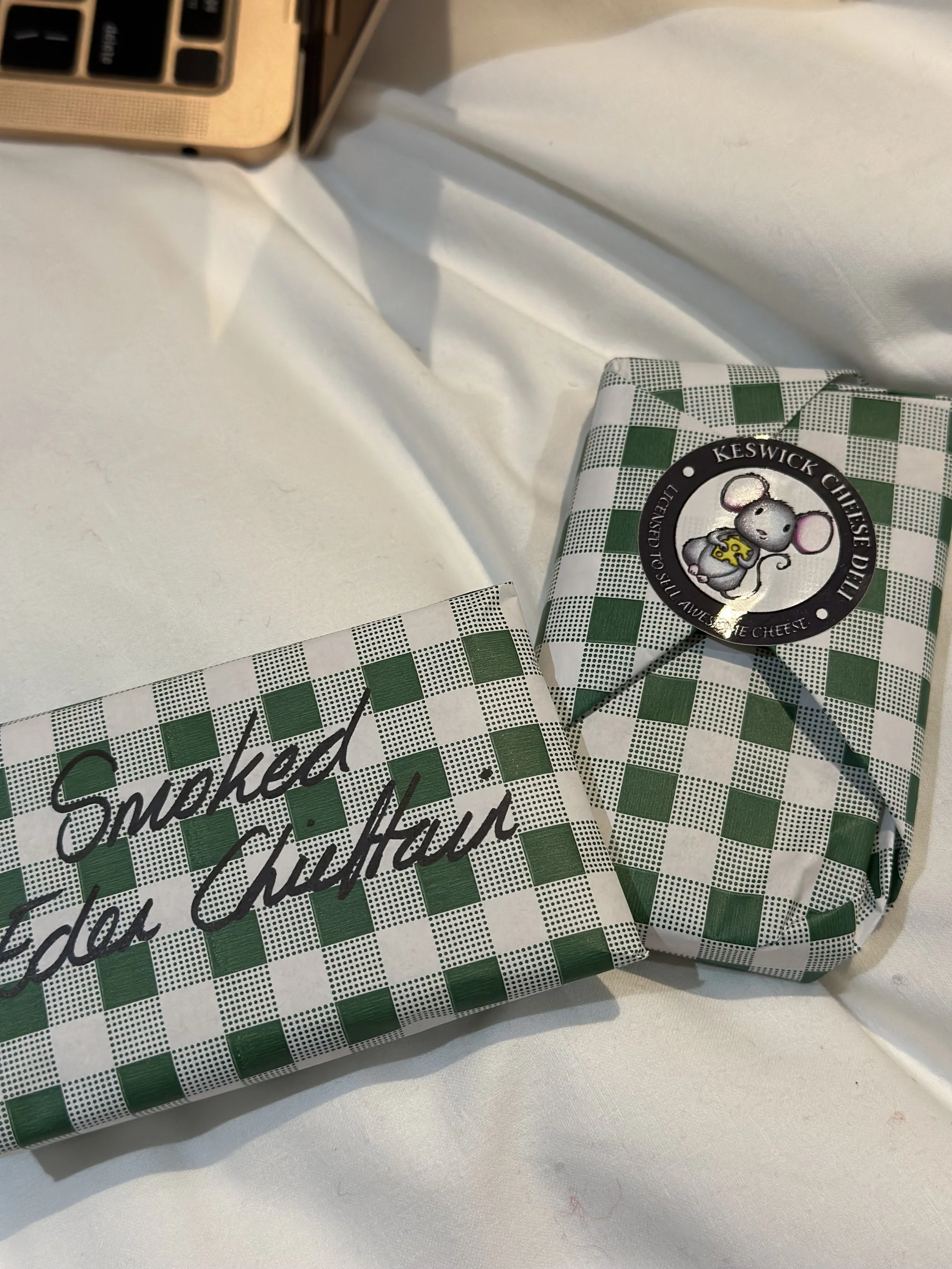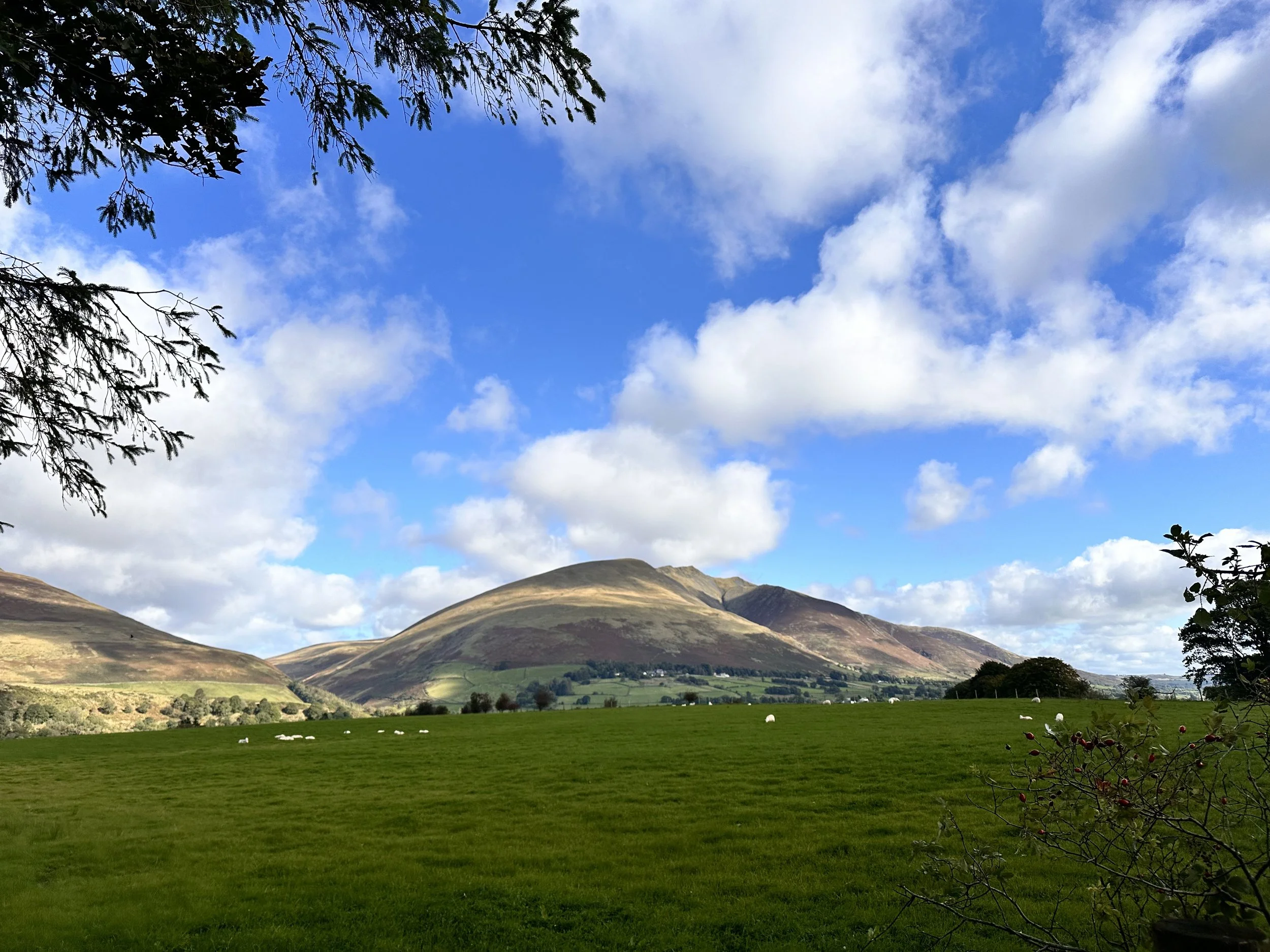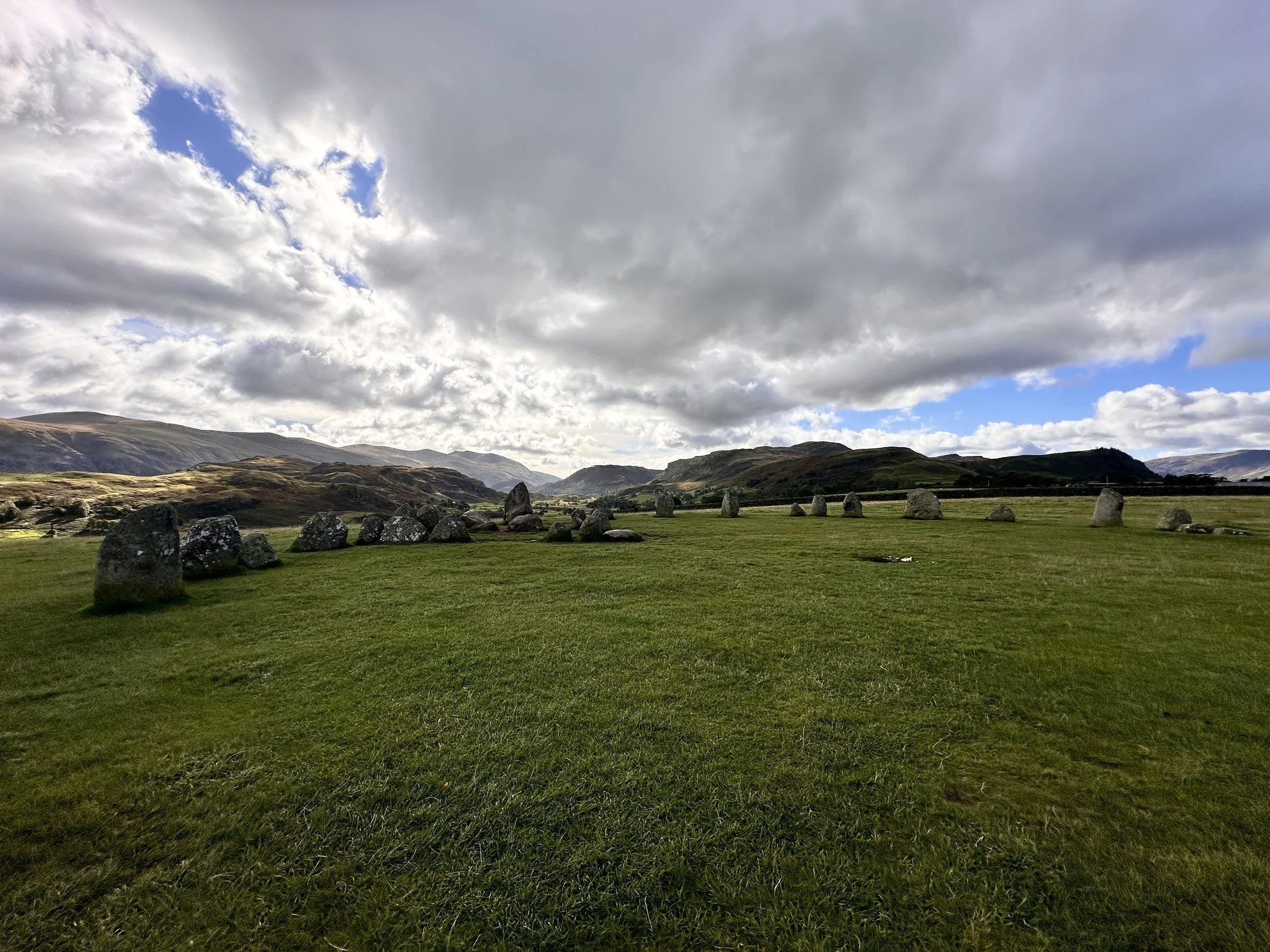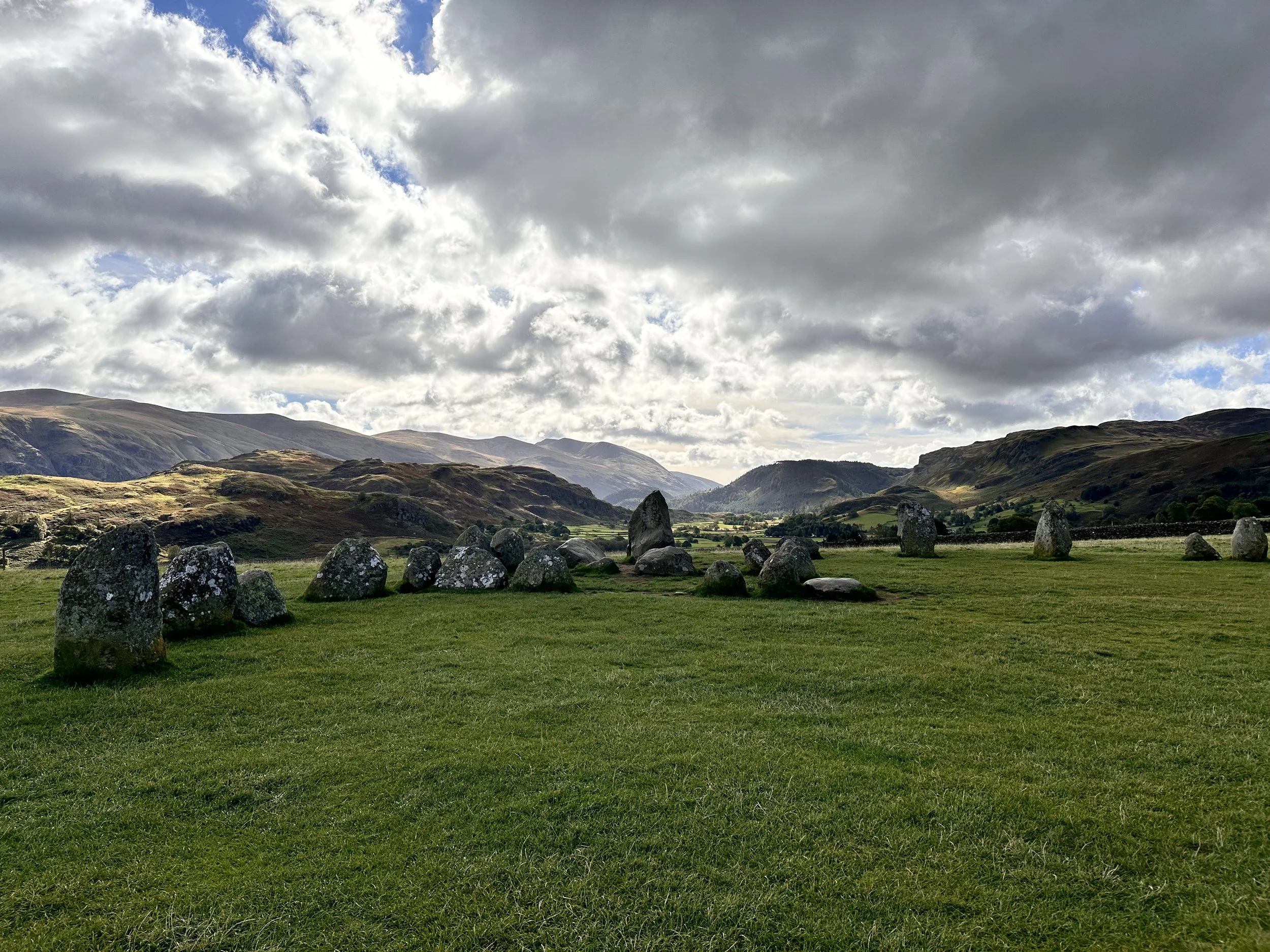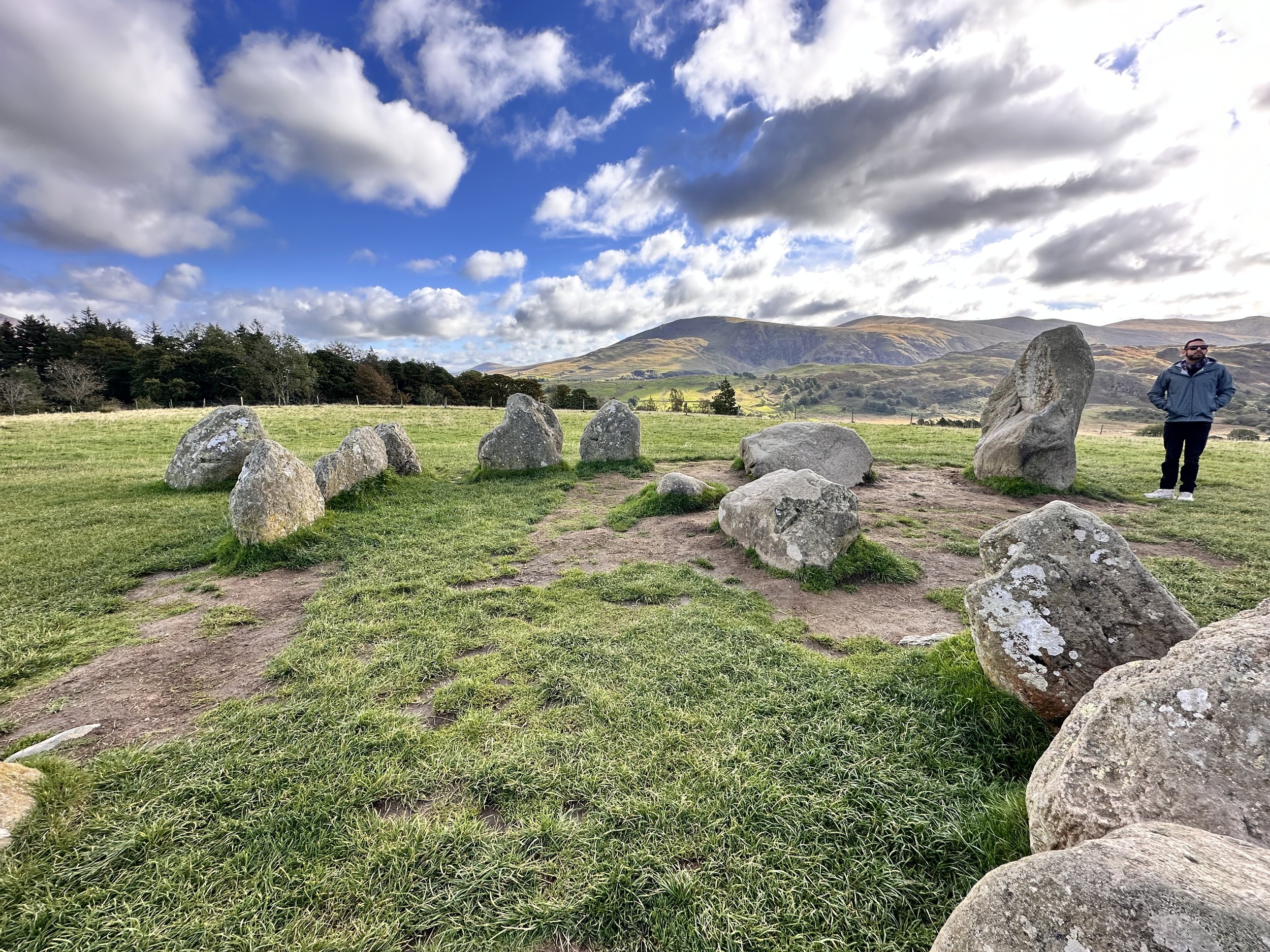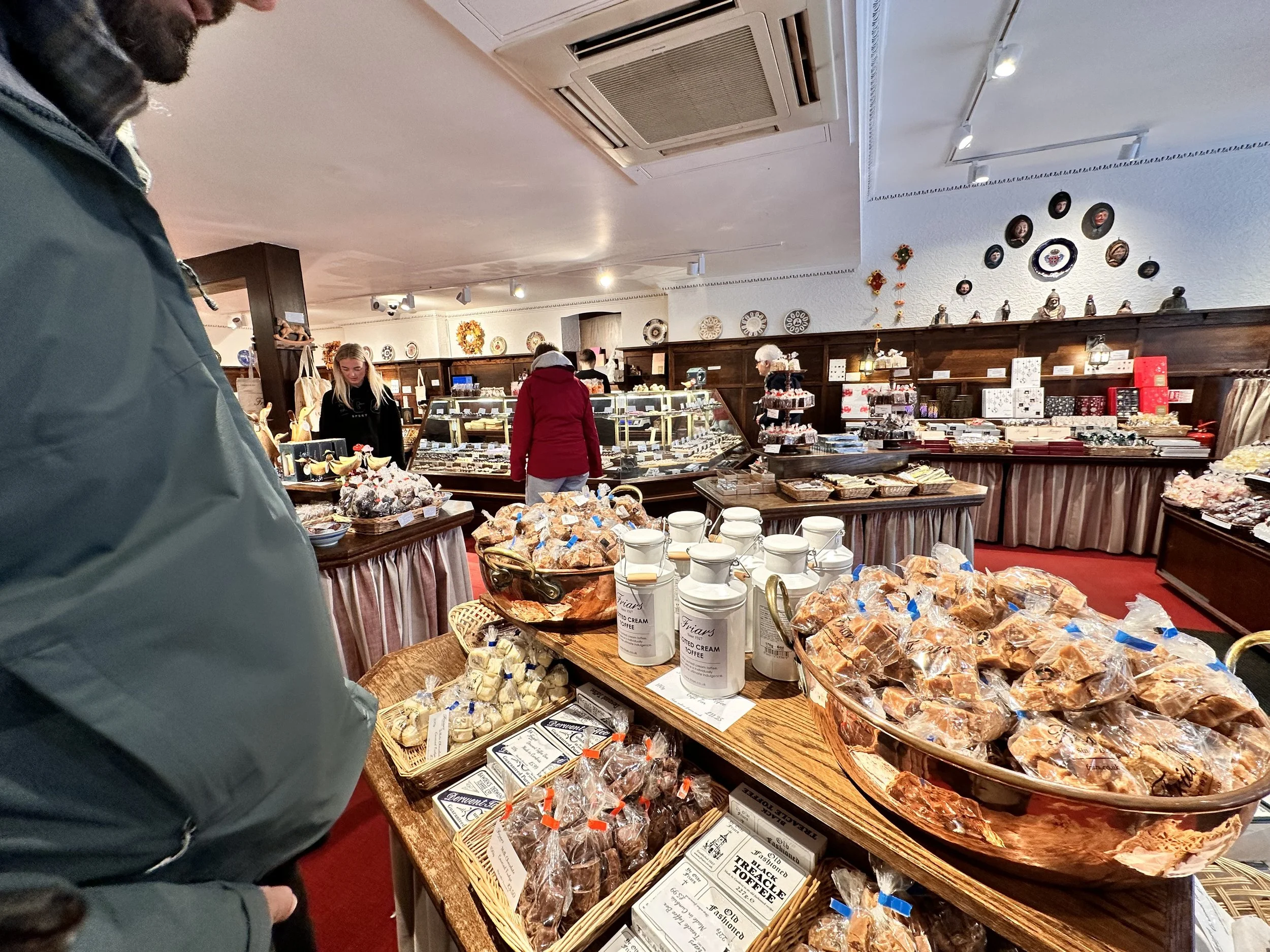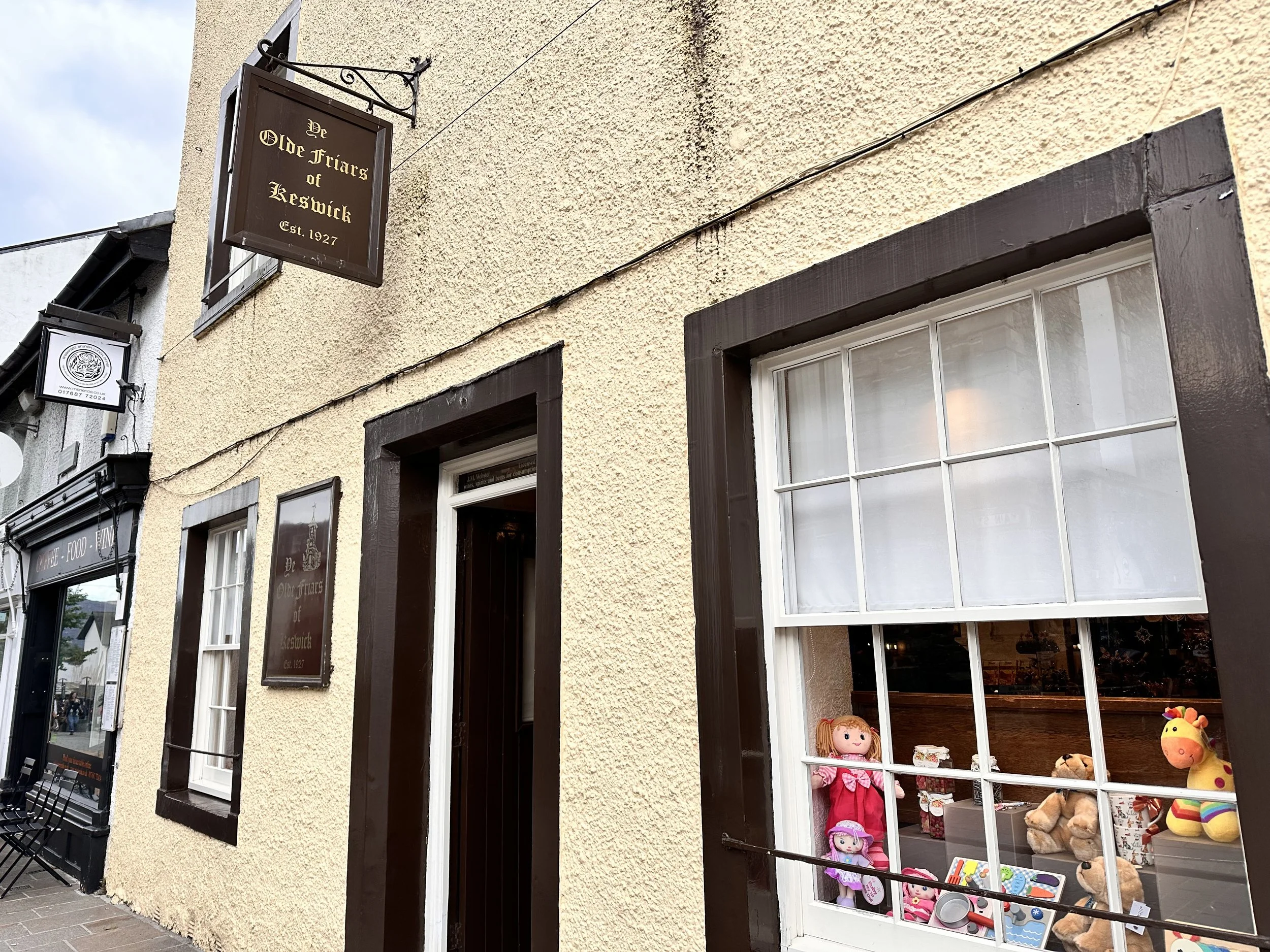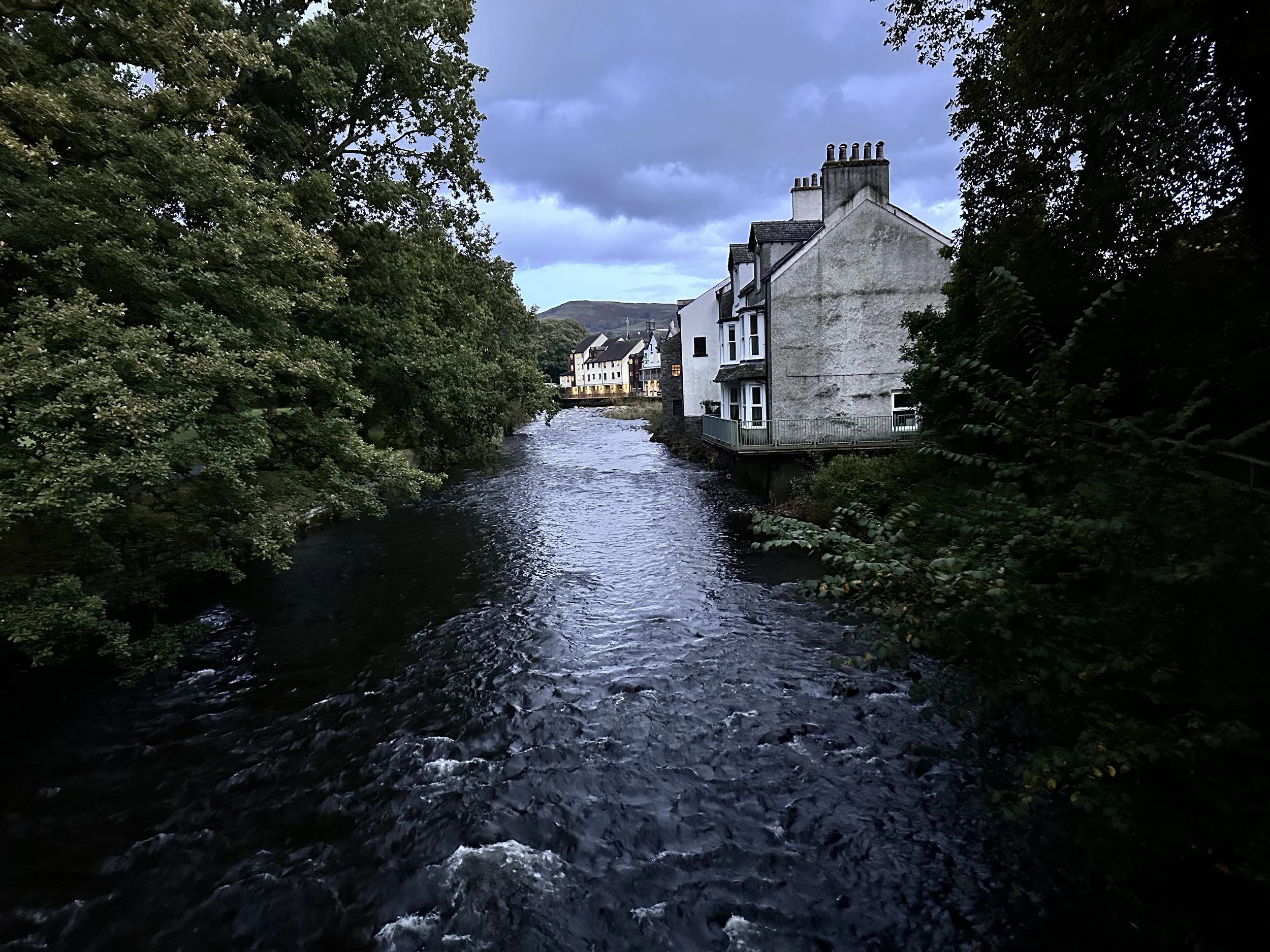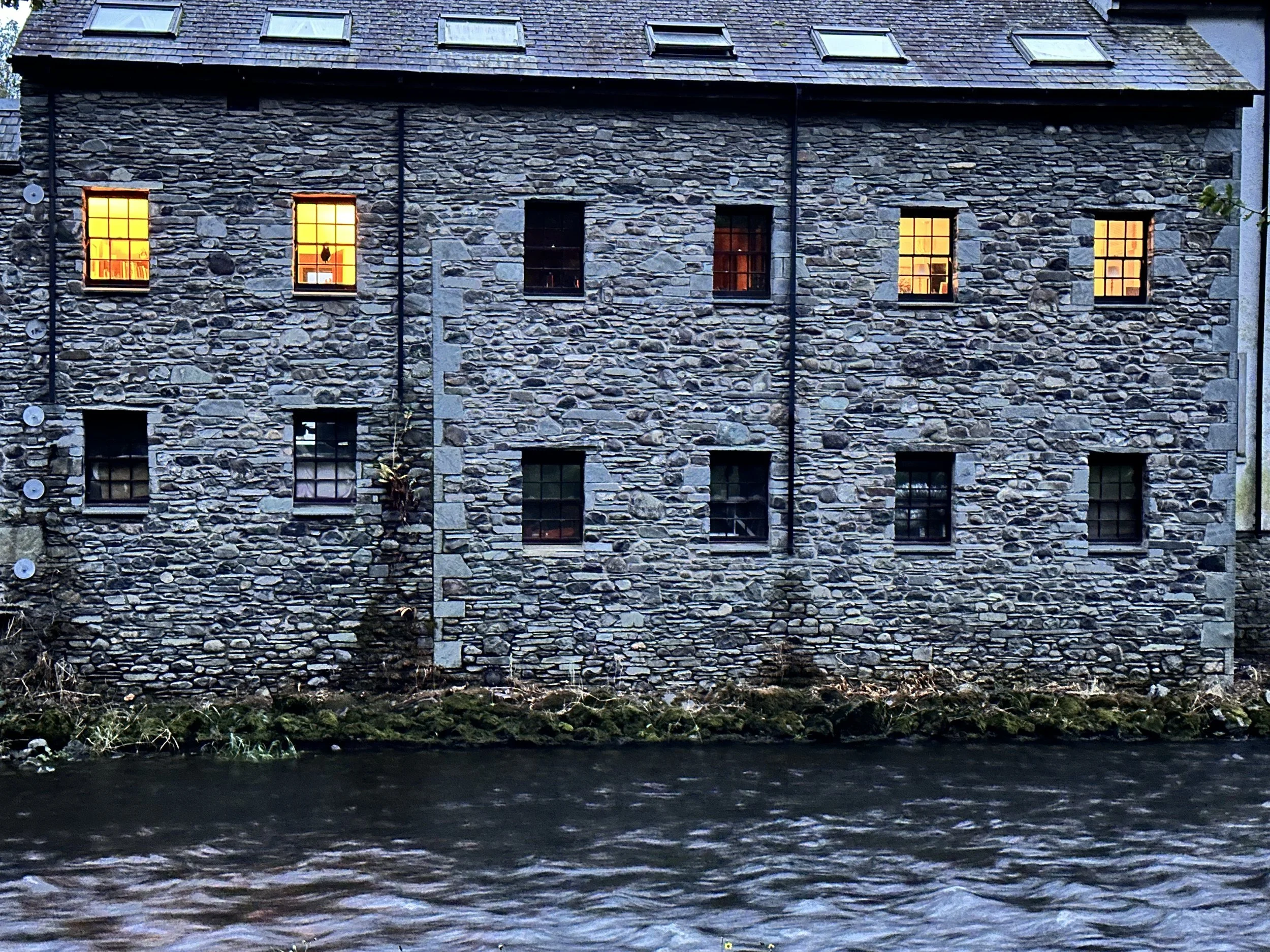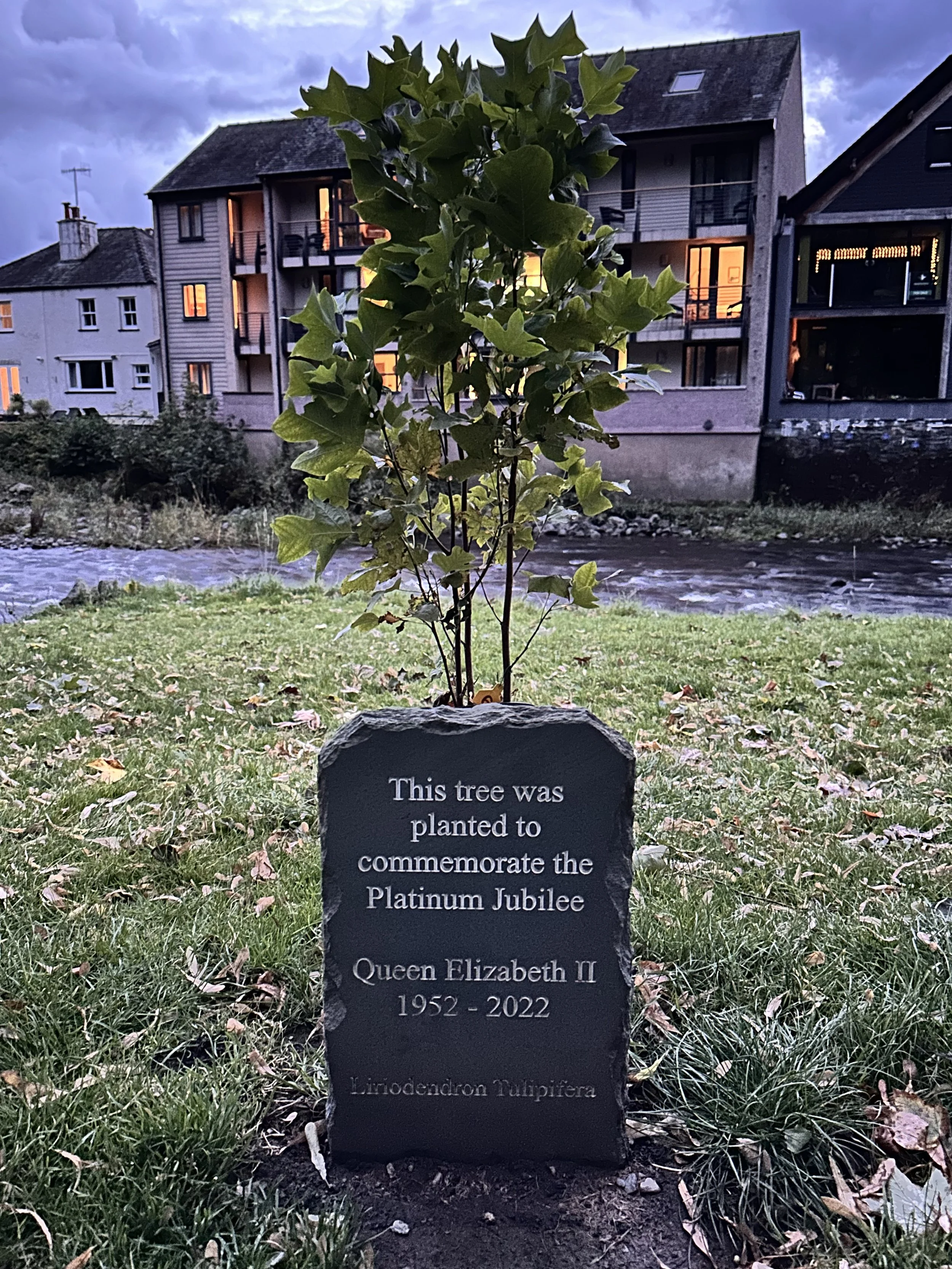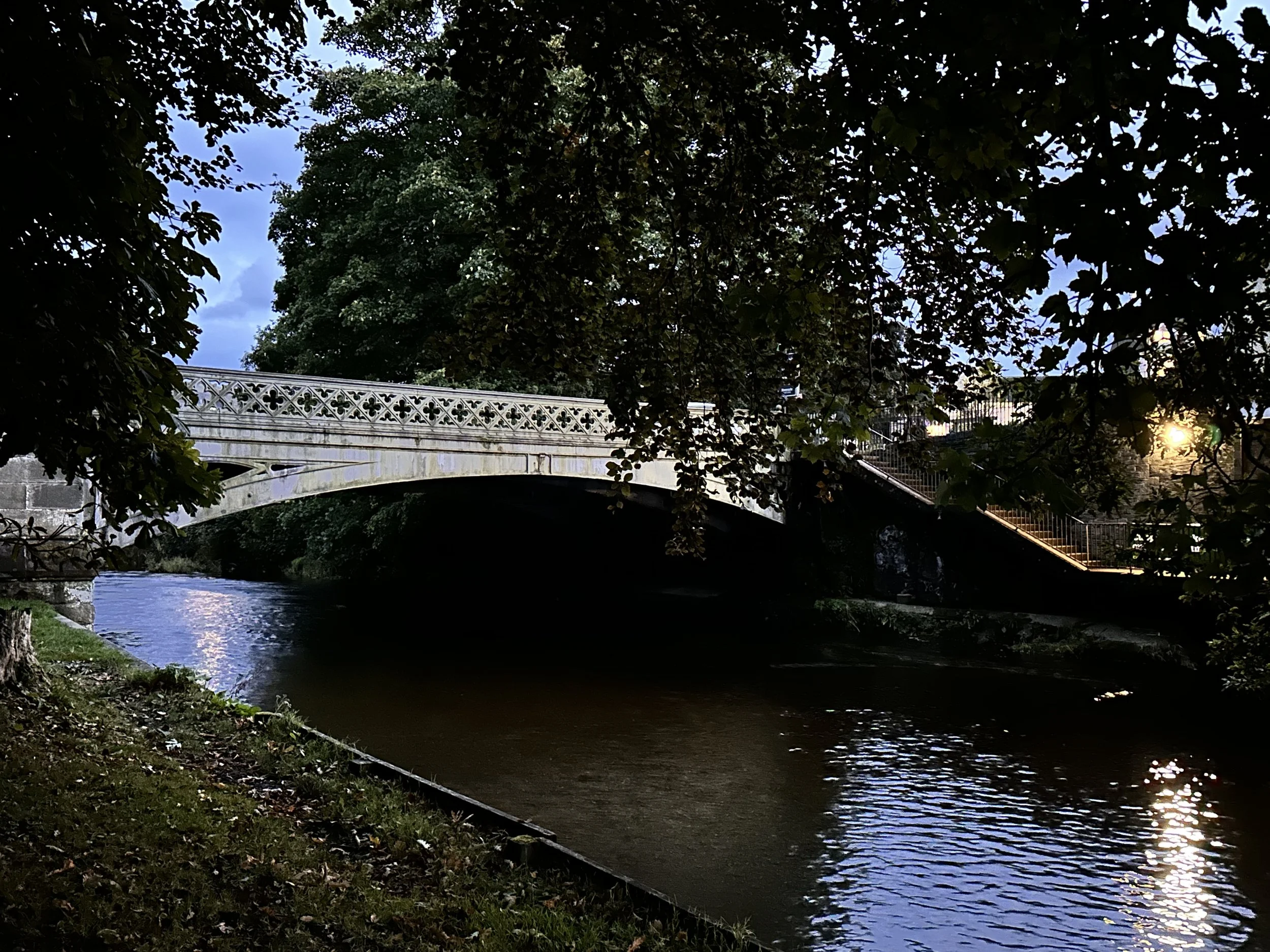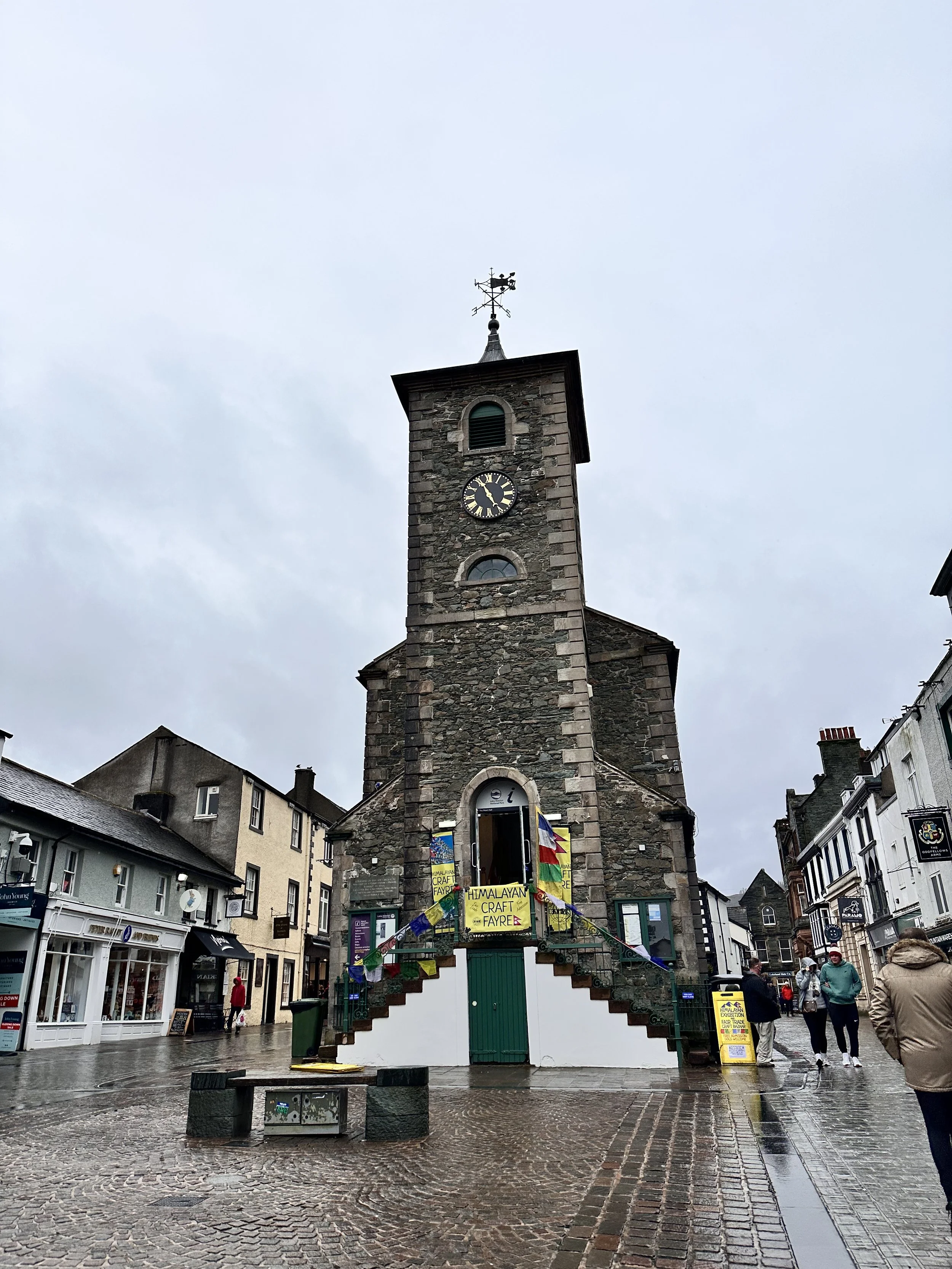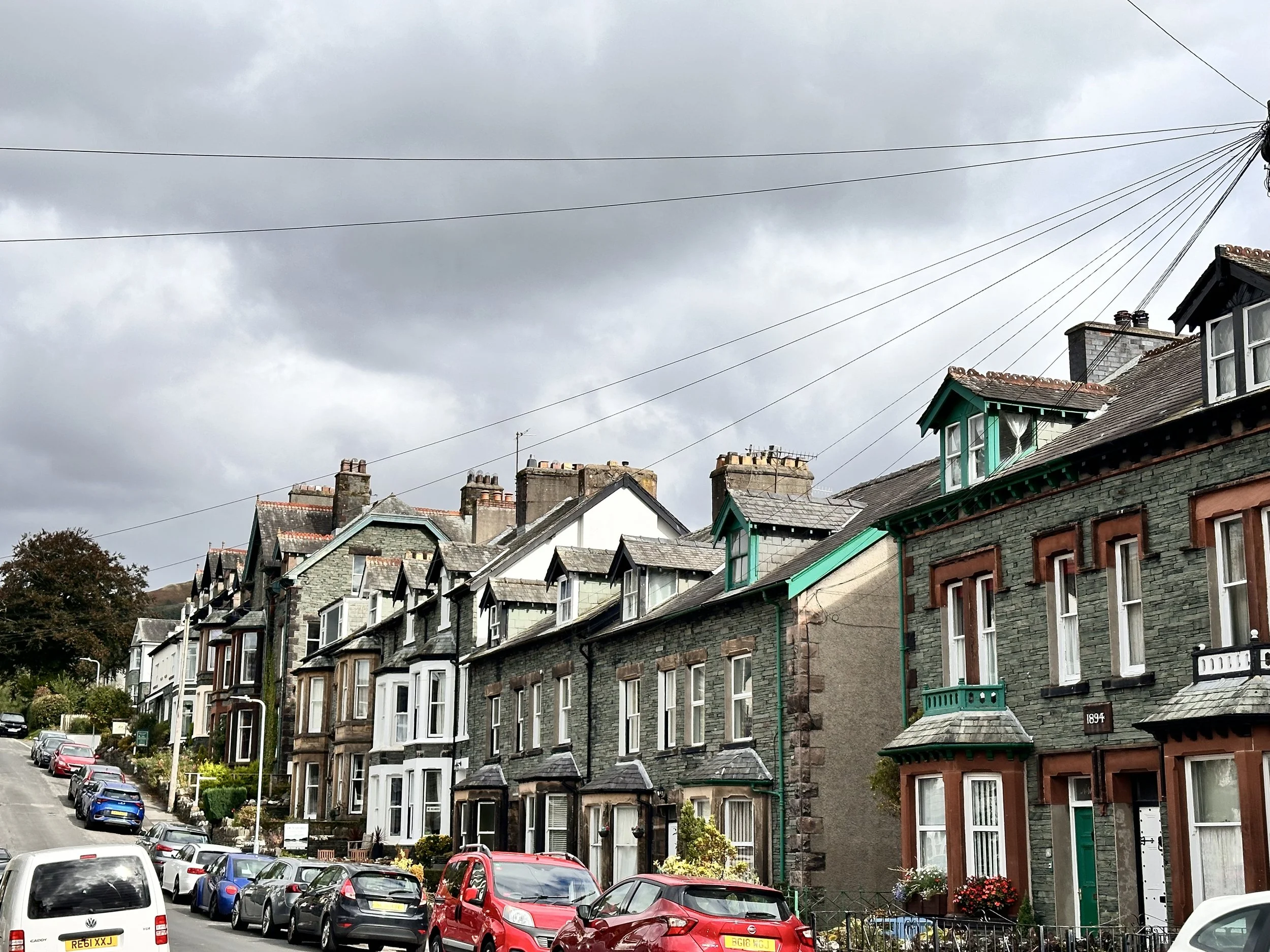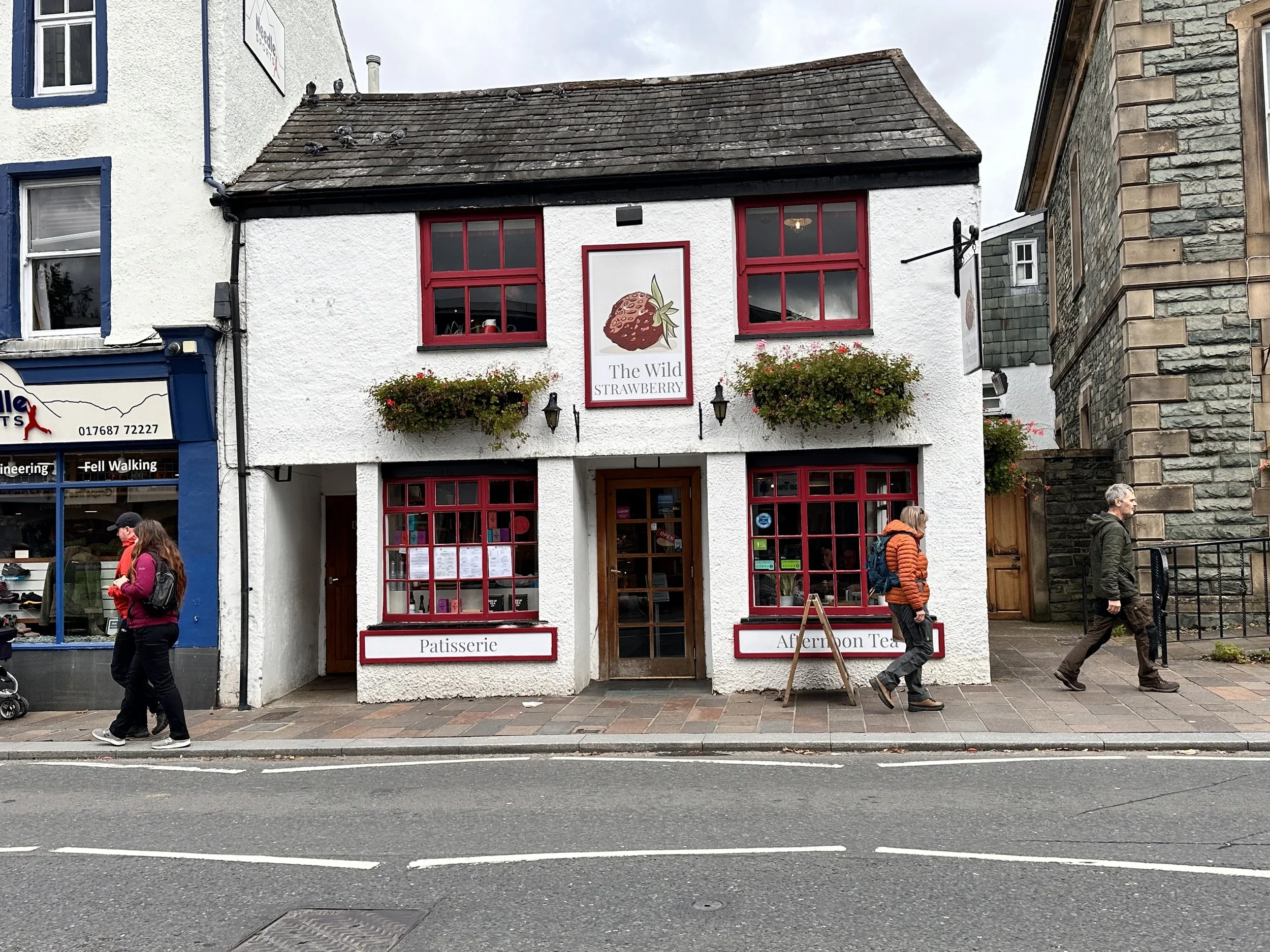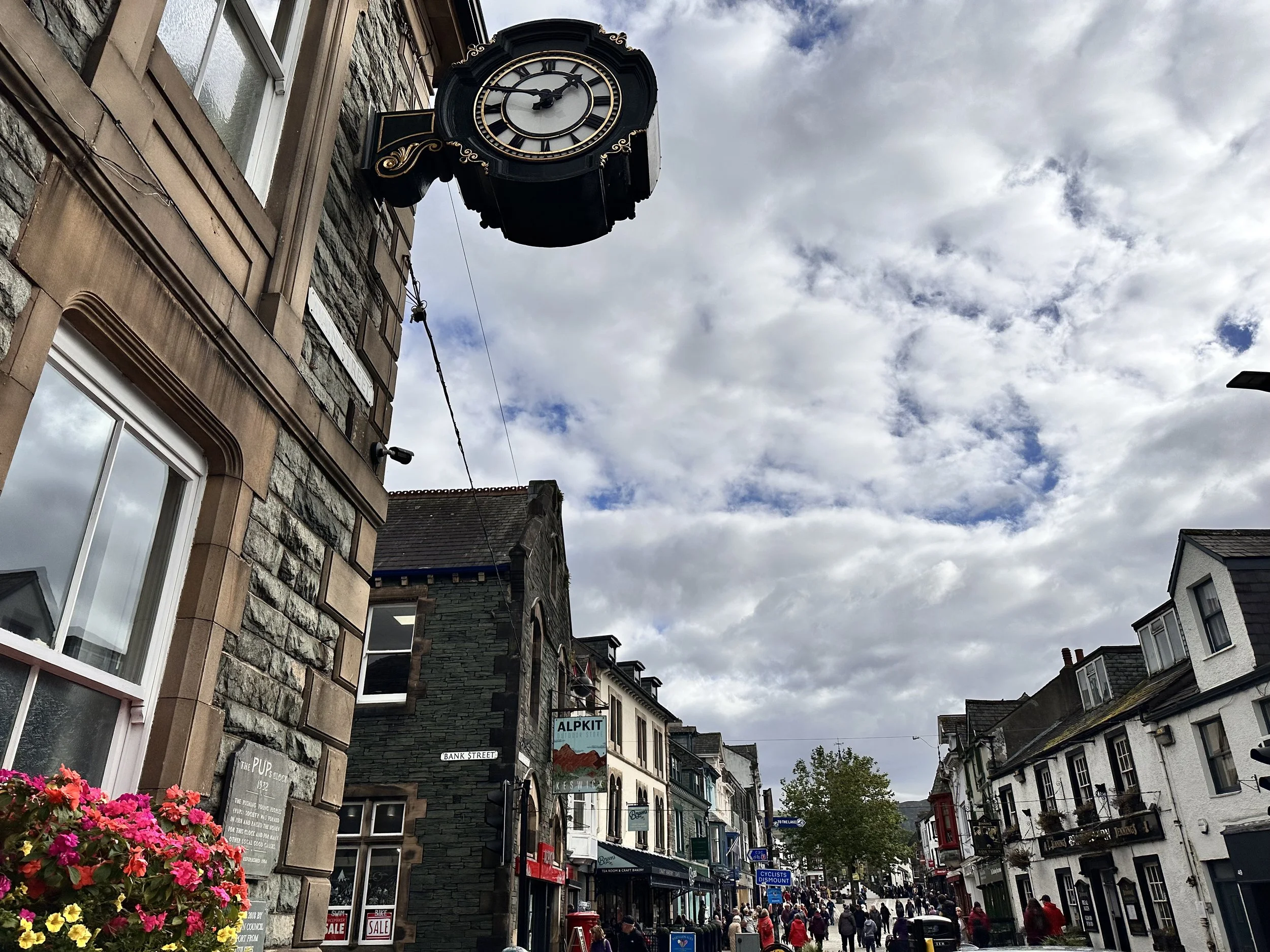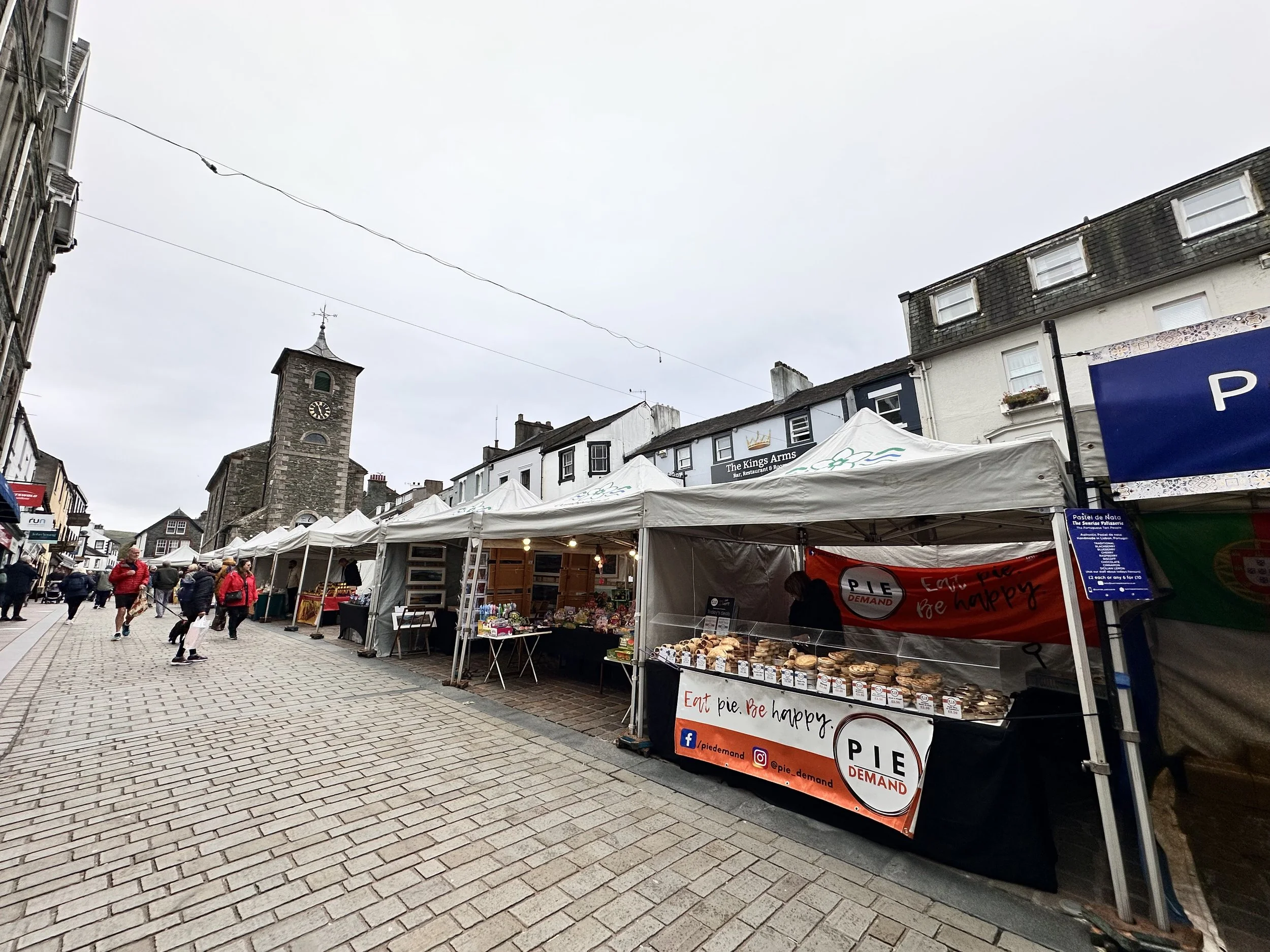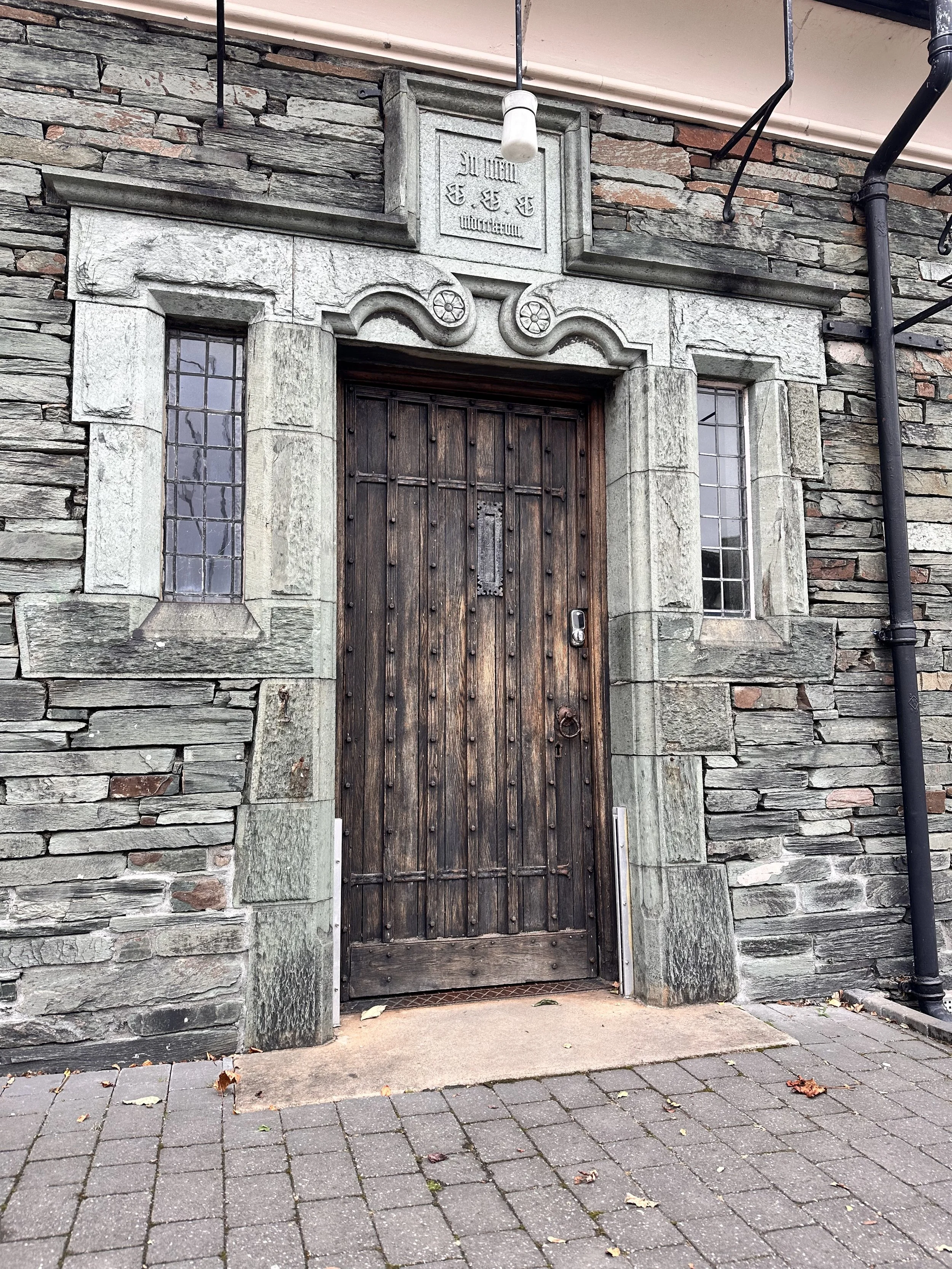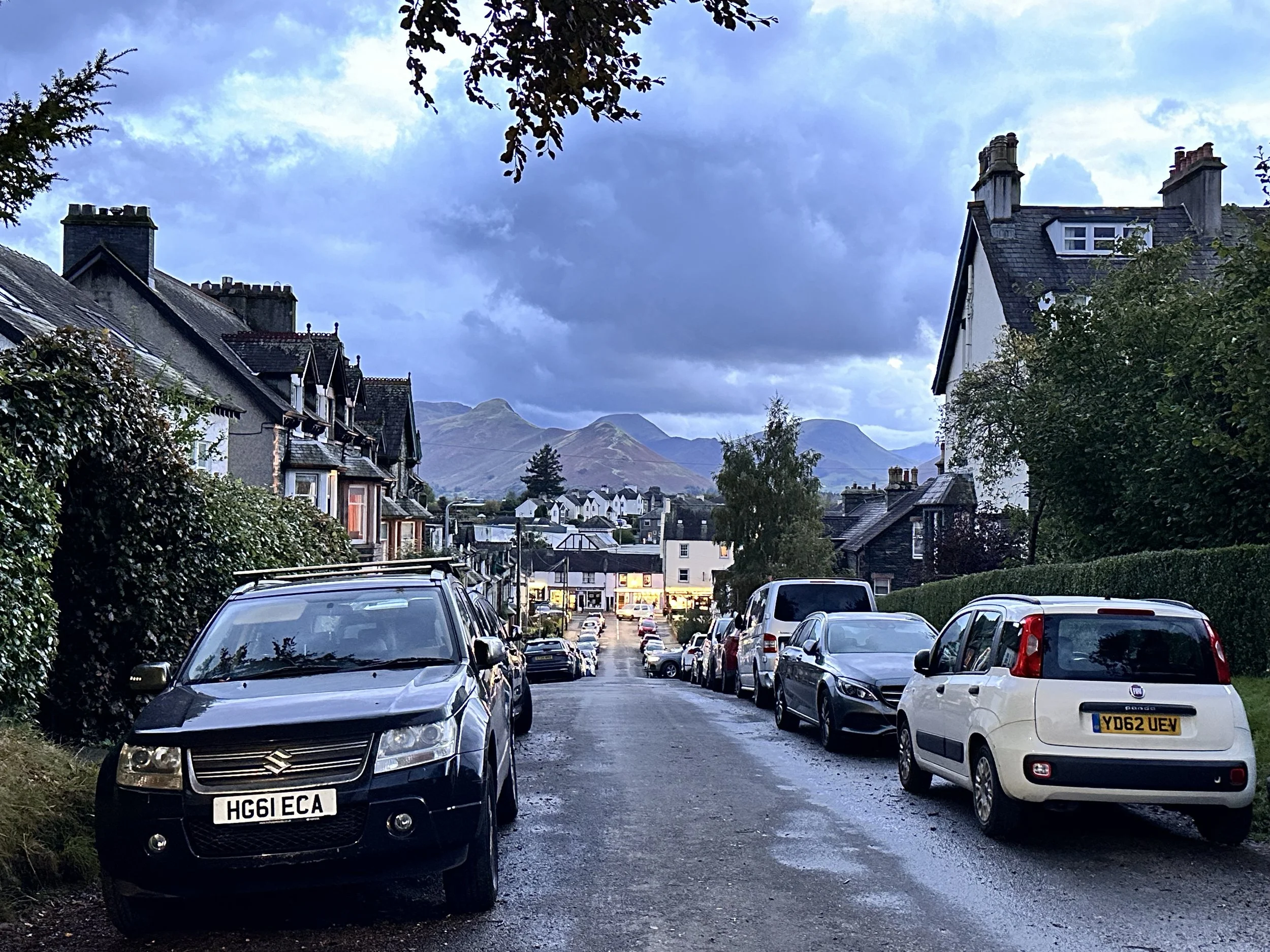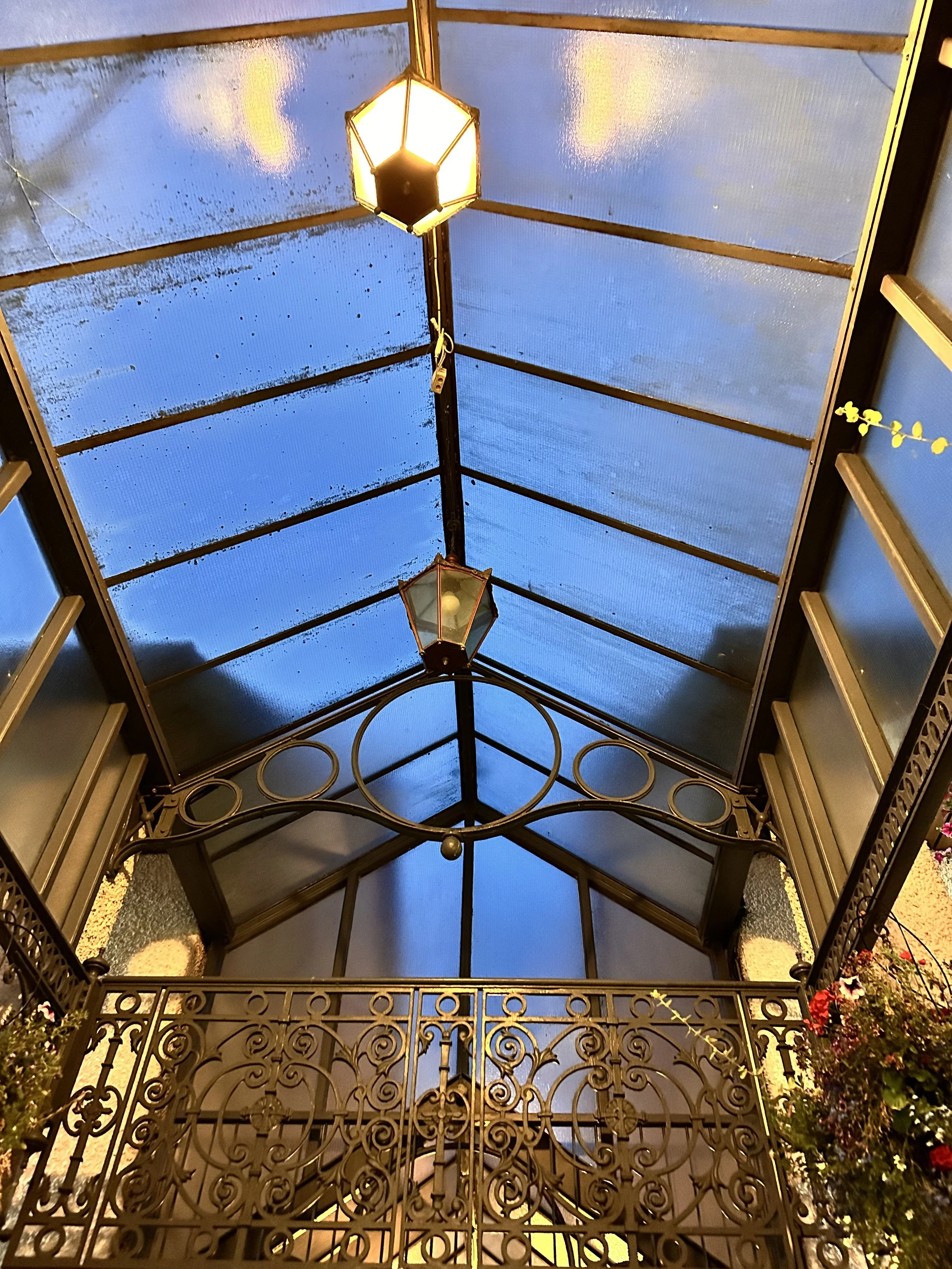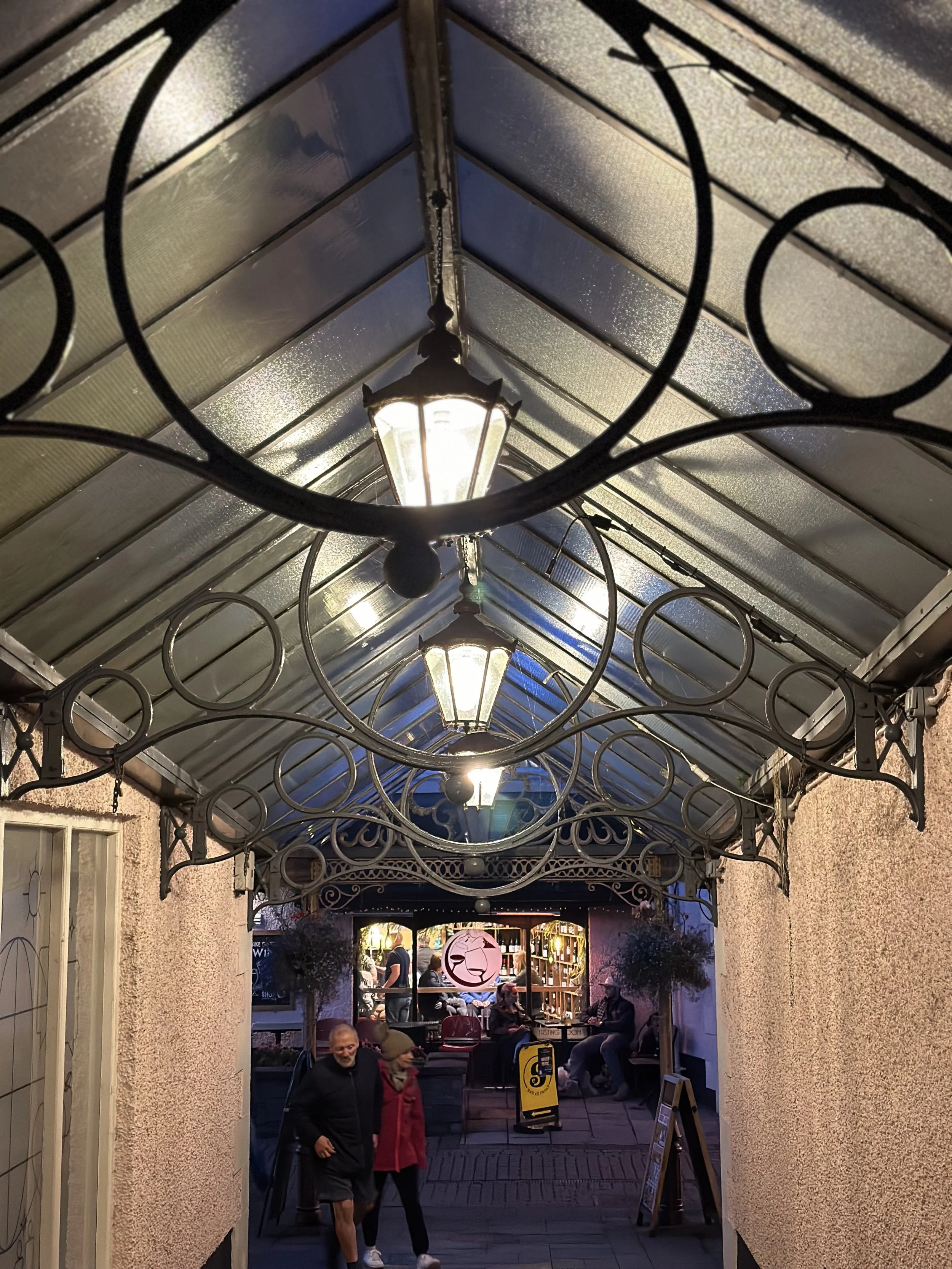Exploring Keswick, England
Time needed in this town: 3-4 nights
Keswick is one of those little towns that comes as a complete surprise to someone visiting for the first time. While small in size, it is teeming with great restaurants and shops, happy people walking everywhere (especially with their dogs), and Victorian-era buildings in every direction.
We’ve learned this has become somewhat of a retirement community but don’t let that fool you. These retirees were out far later than we were every night and oftentimes, out in groups. During the day, they are off on strenuous hikes in some of the most unspoiled parts of England. Next to the highlands in Scotland, this is one of our most favorite places in the UK and we will absolutely be coming back again.
The below information is a complete guide of the best places to stay, the top rated places to dine and drink, and all there is to see and do. We’ve also included transportation tips, as well as a summary of the history of this beautiful town!
Jump To:
Where to Stay
The Royal Oak at Keswick
We wanted to like this hotel but unfortunately, it’s not as accurate as the website depicts it. Check-in was in the restaurant, right next to the bar, which made it awkward to lug all are stuff through. The room we were in was spacious enough, but the bedding had marks all over it that you could tell couldn’t come out and the carpeting was covered with stains. In addition, there was absolutely no parking available, so you had to park in the one overnight car park (the central lot) and lug your belongings (there is a loading zone next to the building, but those spaces are usually full).
NOTE: If you do choose to stay there, do not follow the instructions on the website for the car park. It’s the wrong one and the furthest away.
BETTER Recommendations
Where to Dine & Drink
Bar es keswick
Wood-accented locale with vibrant artwork, offering Mexican & Spanish tapas, craft beer & tequila.
Derwent Walker Cocktail bar and Restaurant
Serving a wide variety of international tapas - they are very gluten-free-friendly!
Dog and Gun
Traditional venue with timber beams, offering a contemporary & classic menu, plus cask ales.
Fellpack
Warm, cozy cafe serving all-in-one meals & hearty comfort food staples alongside cocktails & coffee. NOTE: They have many gluten-free options.
Keswick Cheese Deli
Per their site, “At The Cheese Deli, we believe that Cumbria has so many fantastic cheeses to choose from, that we specialise in stocking Cumbrian-made cheeses. We have an extensive range from local cheese makers at Thornby Moor Farm in Wigton, award winning Appleby Creamery in The Eden Valley and The Lake District Cheese Company from Aspatria.”
Lake Road Brunch
Serving only brunch. NOTE: They have NO gluten-free options available.
LakeSide House Cafe
Open Friday - Sunday, they are open for breakfast and lunch. They do have a few gluten-free options.
The Lakes Distillery (cockermouth)
Established in 2011, The Lakes Distillery is nestled on the north shore of Bassenthwaite Lake and their majestic surroundings, near Keswick.
You will enjoy an interactive tour of the state-of-the-art distillery, then a tasting of their award-winning spirits. There is also informal dining - Bistro at the Distillery - on site.
TIP: Visitors are encouraged to take a walk down to the River Derwent, passing by the friendly Alpacaly Ever After herd who graze on the site, or the nearby Bassenthwaite Lake to enjoy the stunning views.
The Keswick Cheese Deli
Per their site, “Here in the beautiful county of Cumbria, with its farming heritage, there has been a long tradition of cheese being made by hand, on local farms.
At The Cheese Deli, we believe that Cumbria has so many fantastic cheeses to choose from, that we specialise in stocking Cumbrian-made cheeses. We have an extensive range from local cheese makers at Thornby Moor Farm in Wigton, award winning Appleby Creamery in The Eden Valley and The Lake District Cheese Company from Aspatria.”
The Pocket Cafe Bar
Serving homemade pizza, real ales and local craft beers. They also have live music a few times a week. NOTE: They do have gluten-free pizza options.
The Round
Energetic pub whipping up gourmet burgers & loaded fries, plus craft beer, wine & cocktails. NOTE: All burgers can be made on lettuce instead of a bun, or choose a gluten-free bun if you wish!
The Square Orange Café
Cozy bar & eatery serving stone-baked pizzas, tapas & desserts, plus coffees, wine & beer. NOTE: While their menu says “avoiding gluten”, it does not mean they are gluten-free.
The Wild Strawberry
Per their site, “The Wild Strawberry Keswick is a café and patisserie housed in one of Keswick’s oldest and most characterful buildings. A family-run business, we provide a light and relaxed environment in which our customers can enjoy delicious homemade food and drink. We have ample seating, a spacious upstairs area with a great view of the Moot Hall and a sheltered outside courtyard.”
NOTE: They have a lot of gluten-free options, including crepes!
Thyme Bistro
Local & global fare including burgers, meat dishes, pizza & pasta are served at this quaint venue. NOTE: They have gluten-free pizza and pasta options.
Things to See & Do
Historical Exploration
Stone circles were built thousands of years ago by hauling enormous boulders (stone monoliths) into a clearing and arranging them in a circle. Most date to the early Bronze Age, which was about 2000 B.C. to 800 B.C., but Castlerigg is much older, constructed around 3000 B.C., in the late Neolithic period. It’s not as well-known as other circles, not even as those in its own neighborhood (the most famous in the Lake District area has the evocative name of “Long Meg and Her Daughters”), but it is the most vividly situated of all the British stone circles, ringed by stunning views and the mountains of Blencartha, Helvellyn and Skiddaw.
Derwent Pencil Museum
Located in Keswick, the home of the first pencil, visitors enter this museum through a replica graphite mine, which would have served as the source of the pencil industry over 300 years ago! From there, you are taken on a journey of graphite and pencil discovery, from its humble beginnings as a cottage industry, to modern day production. Finally, you also get to discover their secret WW2 pencils with hidden maps, one of the largest color pencils in the world (measuring almost 26 ft.), the Queen's Diamond Jubilee pencil, miniature pencil sculptures, and much more!
Our Experience: It was one of the greatest things you could do in Keswick on a rainy day. And, if you’re an artist at heart (in any sense), you will love their expansive store!
Millican Daltons Caves
Millican Dalton was a British self-proclaimed “Professor of Adventure”. He left his city life and decided to live in a cave, remaining self-sufficient for nearly 50 years. He also offered climbing and walking adventures for visitors to the area. He was famous for his hat and raft that he used to travel to the nearest town of Keswick with. A few of his famous quotes are inscribed on a stone outside his cave.
By all accounts, Dalton was a gentleman, very much a free spirit, and ahead of his time. The nearest town of Keswick is now called the “Adventure Capital of the Lakes”. You can still visit Millican’s cave and it’s easy to see why he chose this spot - it’s beautiful, off the beaten track, has access to fresh water, and provides great shelter from the environment.
NOTE: This is part of the Castle Crag hike, which you can find more about here.
Mirehouse and Gardens (Bassenthwaite)
Set in the heart of the North Lake District, three miles from Keswick, the beautiful, natural gardens at Mirehouse offer stunning views of the dramatic Lakeland landscape they are set in.
Visitors can enjoy the live piano music, unusual photographs and manuscripts, as well as children’s activities, as they wander through this family home. Also, enjoy the tranquility of the walled Bee Garden, stroll in quiet contemplation along the Poetry Walk, or sit by the shores of Bassenthwaite Lake.
The Bowder Stone
Standing around 29ft. high and 49 ft. in diameter, there is some debate over whether this massive rock is a glacial erratic from Scotland or a huge piece of rock that fell from Bowder Crag above.
FUN FACT: It’s rumored that shaking hands underneath this geological wonder brings good luck.
Wordsworth House & Garden (Cockermouth)
Built in the 18th century, Wordsworth House is a Georgian townhouse situated in Cockermouth and is in the ownership of the National Trust. William Wordsworth was born in the house in 1770. It is open to the public as a writer's house museum from March to October each year.
Unique Experiences
Alpacaly Ever After
Per their site, “Our mission is to rehome alpacas and llamas from all over the country and give them a wonderful new home with the very best of care, while bringing people in touch with the landscape and the natural world through outstanding alpaca and llama experiences, accessible to all and surrounded by the beauty of the Lake District World Heritage Site.” They offer meet and greets, walks, and treks.
Keswick Alhambra Cinema
A family-owned-and-operated traditional picturehouse boasts state-of-the art sound and projection in a gorgeously restored 157-seater auditorium, plus a new 28-seater Screen 2! They show both independent and popular films.
Maker’s Mill
Makers Mill is a creative venue in the centre of Keswick: Housing 4 professional work studios, including Handmade Furniture, Ceramics, Textiles and Mixed Media Art. All centred around a shared exhibiting gallery. As well as space for public ‘Arts and Crafts’ workshops.
The Orchid House
A charming gift shop with hand-painted housewares and other gifts.
Theatre By the Lake
Contemporary theatre with two stages for new and classic works, touring shows, plus a cafe/bar.
Ye Olde Friars of Keswick
A family-run business since 1927, Ye Olde Friars is a treasure trove of chocolate and other confectionary goods that spans nearly two buildings.
Walking/Hiking Tours
Aira Force Falls (Hike in penrith)
An 18th century pleasure ground, Aira Force was the backdrop for Wordsworth’s ‘Somnambulist’ - a gothic tale of love and tragedy. Weave your way through a network of woodland trails, through a landscape that contrasts quiet glades with the drama of waterfalls, to where Aira Beck thunders in one 65-foot drop past fern and rock into the pool below.
Blencathra via Sharp Edge (Hike)
The more famous Striding Edge on Helvellyn is the ridge that most walkers want to experience. Sharp Edge is much closer to Derwentwater and is arguably more challenging. You can see it from the main road coming into Keswick from Penrith, and it looks almost vertical! It's not quite that steep when you get up there, but does involve scrambling, and is very narrow.
If you get to the bottom of the ridge and decide it's not for you, there's an alternative and more gentle route on the opposite side of Scales Tarn. You can still reach the top without the scramble if you prefer. As one of the tallest mountains in the Lake District, Blencathra is a challenging walk with or without Sharp Edge! It’s about an 8-mile hike,
Catbells (Hike)
One of Keswick's most iconic mountains, Catbells, peers over at the town from the far side of Derwentwater. You can walk, drive, sail, or catch a bus to the starting point (or close by), which is a car park at the foot of the fell.
The double hump of Catbells is great fun to climb. There's some optional scrambling at the top that kids will especially enjoy, and you get to the top feeling proud of your effort, without feeling exhausted! The way back down is via a circular route which drops to the lake-side of the mountain and follows a clear path on the lower slopes.
Derwentwater circular (Walk)
Though this circular walk around the whole of Derwentwater isn't particularly difficult, it is quite long (it’s a 10-mile loop), so it will be something of a challenge if you're not used to longer walks.
There are some options for small detours, including to Lodore Falls, a couple of pubs for a refreshment break, and up to Surprise View and Ashness Bridge. If you don't want to stop at a pub, don't forget to bring a picnic!
The route is waymarked throughout, with decent paths. A number of car parks around the lake mean that you can pick your starting point, but if you're staying in Keswick, then you can walk to the shore, directly from town and start from there.
NOTE: If you’d rather take a boat ride to see it all, click here.
Keswick to Threlkeld Railway (walk)
Though there's no train station in Keswick nowadays, there used to be a busy line stretch from the west coast to the eastern edges of the Lake District. Now, the Keswick section of that line is a pleasant flat walk that's accessible to both wheelchairs and prams.
The route is fully paved and almost entirely flat all the way to its end at the village of Threlkeld. It twists through pretty woodland, alongside winding rivers, and even through old railway tunnels. Information boards along the way provide further information to its history.
If you want to do the whole 6-mile route to Threlkeld without retracing your footsteps to the start again, buses run close by each end. Or ,you can just walk as far as you’d like, then turn back. Additional paths run in different directions through the woods and up Latrigg, though be aware that these are no suitable for wheelchairs and buggies.
River Greta
Right behind the town of Keswick are some great walking paths that are easy, beautiful, and give you a different perspective of the area!
Scafell Pike (Hike)
Rising above Cumbria, in Lake District National Park, Scafell Pike stands at the edge of three micro-climates. Weather can change drastically in a very short amount of time - high winds with strong windchills and even snow may strike at any time of year. The volatile weather may include dense fog on the mountain’s summit area, which is a large boulder field with few landmarks aside from the summit cairn. Hikers should know how to use a map and compass to navigate the area should fog cover the summit.
Those who are prepared have a choice of multiple routes from Wasdale Head, Eskdale, Langdale, and Borrowdale, each with varying difficulty. Novices and families may wish to use the Corridor Route from Styhead Tarn near Borrowdale, and experienced climbers may want to try Ill Crag. Always be prepared for a long day of fell-walking (whatever the weather) to the highest mountain in England.
Wandering Around Keswick
As usual, take time to just wander the town and enjoy the many wonderful things about it!
How to Get Around
Car
Keswick is easily reached, via junction 40 of the M6 (Penrith) and the A66, or via the A1 and the A66. For a scenic route coming from the South, leave the M6 at junction 36 and take the A591 through Windermere, Ambleside and Grasmere. Using motorways from Manchester, it takes approximately 2 hours, while from the Midlands Keswick is around a 3 hour drive. The average journey time from London is approximately 5 1/2 hours.
Ferry
For visitors from Europe, there are sailings to Hull and Newcastle. The journey from Hull ferry terminal to Keswick by car is approximately 3 1/2 hours and from Newcastle, is 2 1/4 hours. The journey from Stranraer ferry terminal for crossings to Ireland is 3 1/2 hours.
rail
The nearest railway station to Keswick is Penrith, on the West Coast Main Line, a distance of 17 miles. A bus service, taking 40 minutes, connects Penrith railway station with Keswick Bus Station. Taxis from Keswick will meet trains at Penrith by prior arrangement. Contact Davies Taxis on 017687 72676 for transport to Keswick. The historic Settle to Carlisle Railway line brings passengers from Yorkshire via the Eden Valley.
A History Summary
7th century - The area was conquered by the Anglo-Saxon Kingdom of Northumbria.
Late 9th century - Northumbria was destroyed by the Vikings.
Earl 10th century - mid-11th century - The British Kingdom of Strathclyde seized the area, and it remained part of Strathclyde until about 1050, when Siward, Earl of Northumbria, conquered Cumbria.
1092 - William II of England, son of William the Conqueror, marched north and established the great baronies of Allerdale-below-Derwent, Allerdale-above-Derwent, and Greystoke, the borders of which met at Keswick.
1181 - Jocelyn of Furness wrote of a new church at Crosthwaite, Keswick, founded by Alice de Romilly, the Lady of Allerdale, a direct descendant of William II's original barons.
1189 - Richard I granted the rectory of Crosthwaite to the Cistercian order of Fountains Abbey.
13th century - Keswick was at the heart of Monastic farming, and Fountains Abbey based a steward there, where tenants paid their rents. The town was also granted a charter to have a market. It is still ongoing to this day.
1536 - 1541 - Furness and Fountains Abbeys were supplanted by new secular landlords for the farmers of Keswick and its neighborhood.
1550 - 1600 - Copper mining made the town richer. Queen Elizabeth I required large amounts of it for defense fortification. It’s also around the same time graphite was discovered and essentially mined (it wouldn’t be used in pencils until the mid-18th century).
17th century - Copper mining was on a decline, but graphite and also, slate, were not. Tannery and weaving were also specialties during this time.
18th century - The pattern of buildings around the market square remained broadly the same until roughly around this century. Originally timber-framed, these home would front the square and sturdily enclose gardens or yards at the back. According to local tradition, these stout walls and the narrow entrances to the yards were for defense against marauding Scots. Also, turnpike trusts were established and major roads in Cumberland were greatly improved.
1760s - Regular public coach services were established but they were expensive, which meant only the well-to-do could afford to travel there. They saw about 12,000 - 15,000 visitors a year.
Mid-19th century - The construction of the railways made the Lake District, and Keswick in particular, more accessible to visitors of modest means.
1813 - Moot Hall was rebuilt.
1846 - Coal gas was supplied to the buildings.
1849 - The Keswick Library opened.
1856 - The water works commenced.
1857 - The Keswick police station opened.
1864 - 1865 - Cockermouth, Keswick, and Penrith (CPK) Railway was open for commercial goods shipping, including coal and ore. In 1865, it was open for passenger traffic as well.
1896 - 1986 - Hardwicke Rawnsley and his wife set up classes to teach metalwork and wood carving. These grew into the Keswick School of Industrial Art, which trained local craftsmen and women.
1896 - The Keswick Reminder was founded - it still circulates today.
20th century - Tourism was increasing and The Cumberland Pencil Company was formed - it was the second biggest economy in Keswick.
1930s - Keswick was firmly established as the main centre of tourism in Cumberland and Westmorland.
WWII - Students from St Katharine's College, Liverpool, and Roedean School, Sussex, were evacuated to Keswick when their own buildings were requisitioned for use as a hospital and a navy base respectively. Students were also brought to the safety of Keswick from Central Newcastle High School, Hunmanby Hall School, Yorkshire, and the Liverpool Orphanage.
1951 - Lake District National Park was formed.
2006 - Cumberland Pencils moved to Lillyhall, Workington, leaving just the museum on the site. Tourism then became the most dominant industry for the town.
